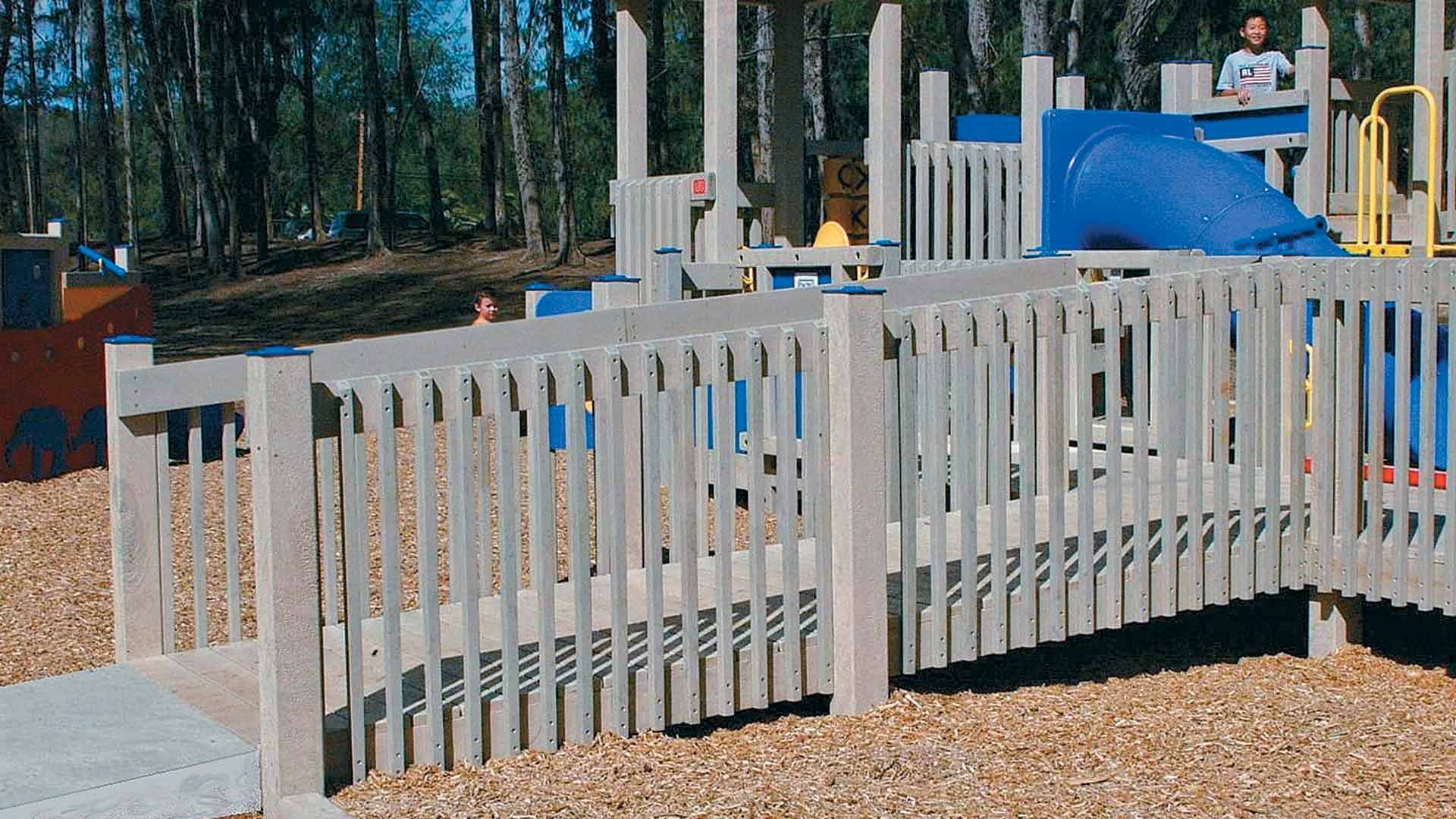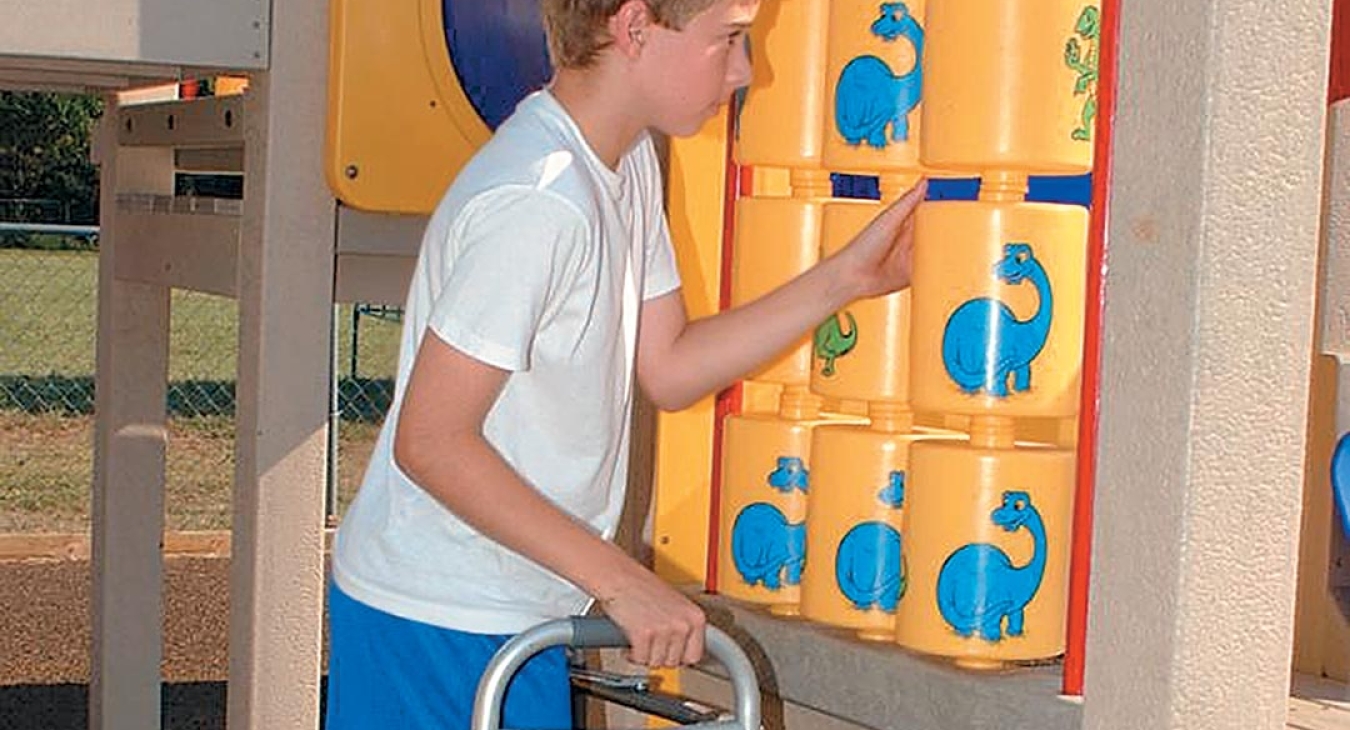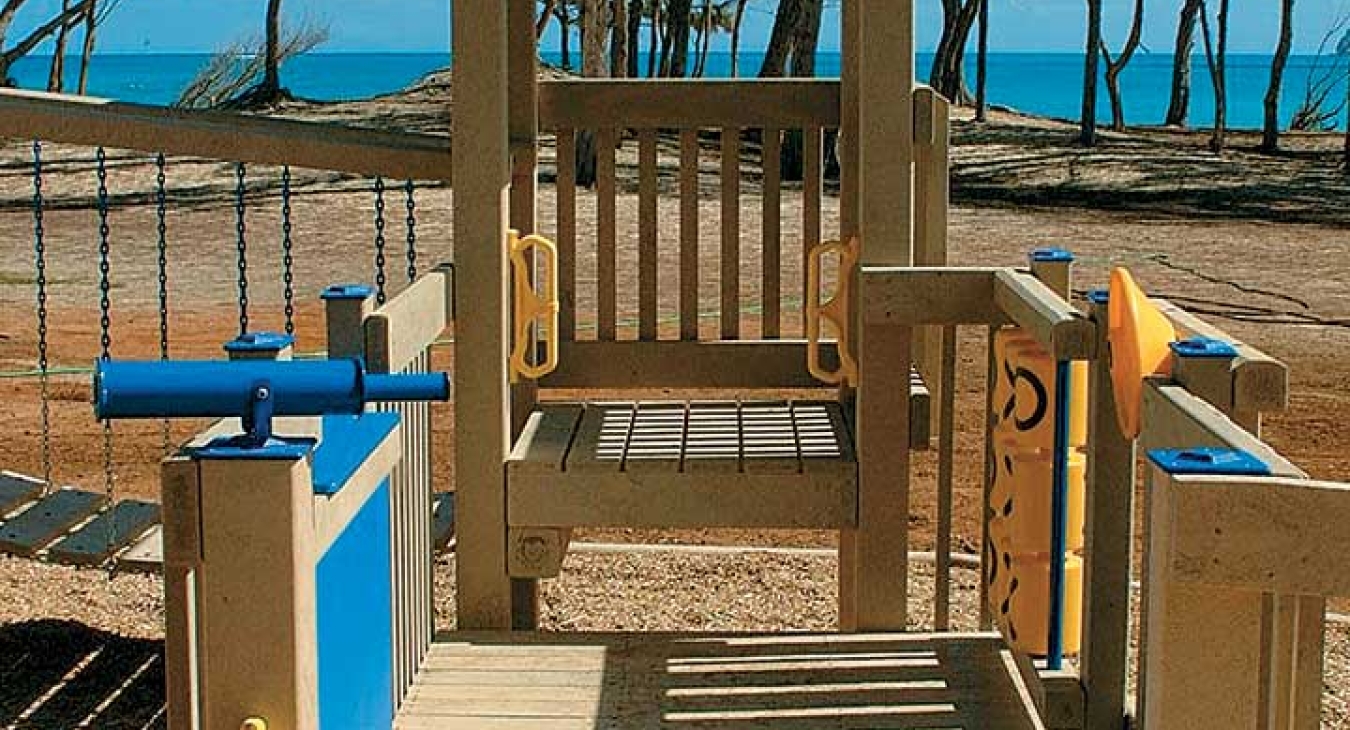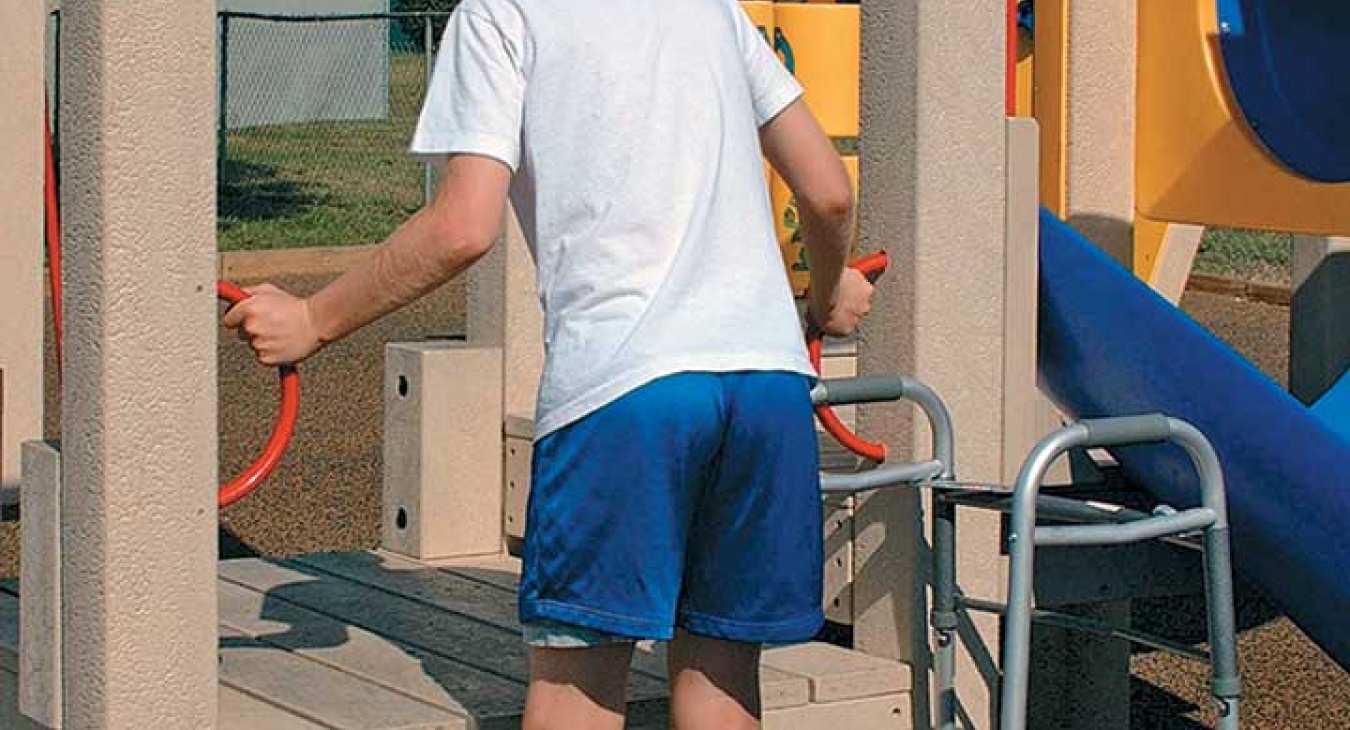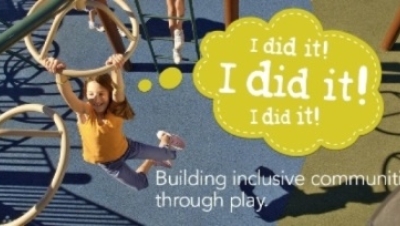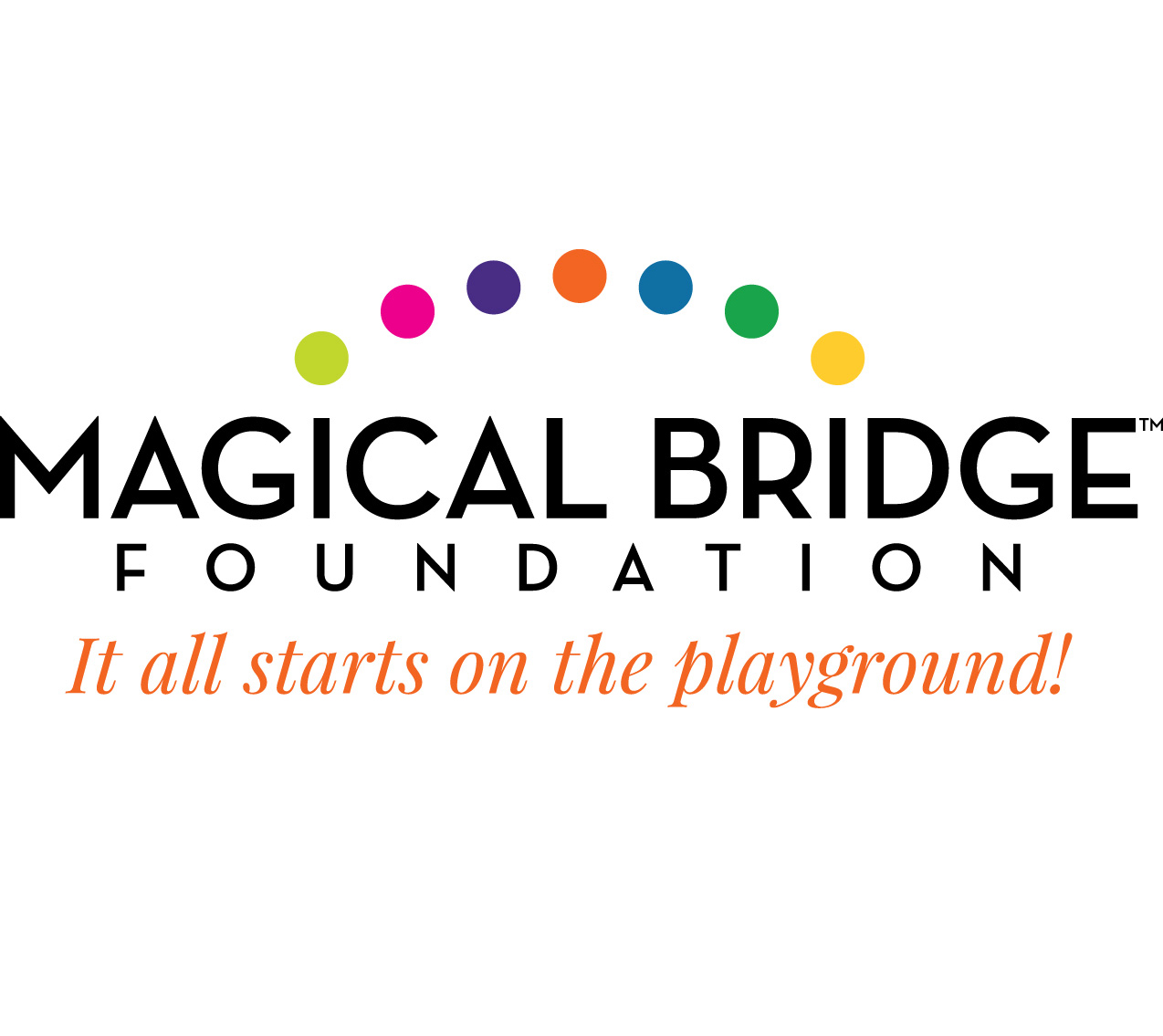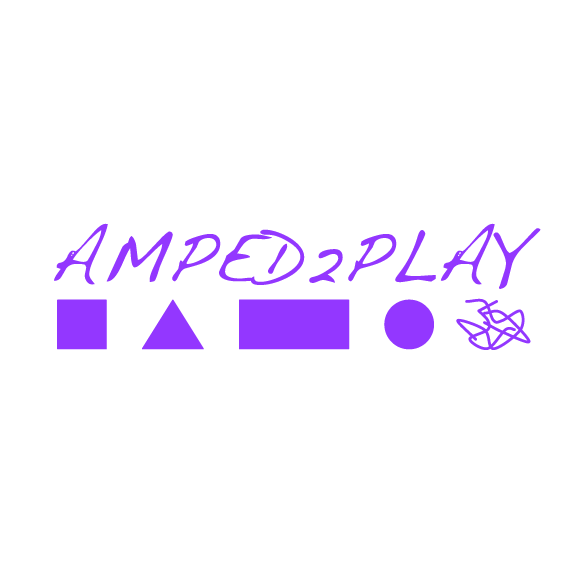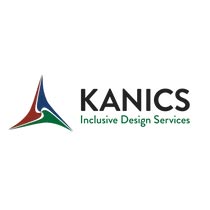Stretching the Boundaries of Design
Meet Billy, a spunky ten-year-old with reddish hair and freckles. His wisecracks keep friends, young and old, in stitches constantly. A few years ago, before his accident, his friends declared him the fastest kid in the local play yard. Now, confined to a wheelchair, he has found himself watching the furious games of chase on the outskirts of the play yard, unable to even maneuver his way across the bumpy (and sometimes muddy) grass to the playground. And, even if he could arm his way to the playground, a high wooden border prevents him from moving any further. If he could somehow get over the border, his wheels would sink into the sand around and under the playground, and even more discouraging, there are no play items on the playground that he can reach from his wheelchair.
Who Requires Playgrounds To Meet Accessibility Standards?
Clearly, something needs to change. Billy's loss of maneuverability should not prevent him from joining his friends. Thankfully, the attentive folks at the US Access Board heard about Billy and decided to formulate guidelines for play area designs to provide access to Billy and other children like him with disabilities. These "Play Area" guidelines were issued in 2000 as a supplement to the Access Board's original ADA guidelines and then incorporated into the new ADA (Americans with Disabilities Act) and ABA guidelines issued in 2004.
According to William Botten, an Accessibility Specialist with the Access Board, the 2004 Americans with Disabilities Act and Architectural Barriers Act Accessibility Guidelines (also called the Final Rule or ADAAG) provides great guidance for accessible design; agencies responsible for adopting the Access Board's guidelines as law (standards) will not approve anything less than the new guidelines. The Government Services Administration (GSA) is the first to adopt new guidelines as standards, taking effect May 8, 2006.
Who is Responsible to Provide Accessible Equipment?
Once the Department of Justice and Department of Defense adopt the guidelines as law, housing management professionals will be responsible to comply with the new guidelines when altering existing play areas or when designing and constructing new play areas. But the burden of compliance also falls on manufacturers of play equipment. Most established playground manufacturers modified their standard play equipment designs shortly after the Play Areas supplement was released in 2000. But at the time of this publication, the guidelines were not enforceable by law to date (for most entities), and play equipment purchasers should have a general knowledge of the accessibility requirements, ensuring they receive products that will comply once the guidelines are adopted.
What is Accessible Play Equipment?
Since building codes are familiar to housing management professionals, the guidelines set by the Access Board for play areas (ADAAG chapter 10, section 1008) introduce nothing extraordinary. The main purpose of the guidelines is to provide access for children to the play area, and then provide access to play components located either on the ground or on the play structure. The Guide to ADA Accessibility Guidelines for Play Areas handbook, created in cooperation between the Access Board and several playground manufacturers, provides clear definitions and visual explanation of the requirements.
The Basic Requirements for Play Areas Can Be Broken Into Two Main Groups:
- Group 1: Ground Level Accessible Routes and Play Components
- Group 2: Elevated Accessible Routes and Play Components
Group 1
The goal of "Ground Level Accessible Routes" is to create access to play equipment. According to the guidelines, there must be unobstructed routes by which a child in a wheelchair (or other mobility device) can maneuver directly to play equipment. For play areas under 1000 square feet the route can be 44 inches wide; otherwise, it should be 60 inches wide. The ground surface of this route must meet the meet the ASTM F 1951-99 "Standard Specification for Determination of Accessibility to Surface Systems Under and Around Playground Equipment." Generally, accessible surfaces include solid rubber, shredded rubber and engineered wood fiber. Pea gravel and sand do not usually meet the accessible surface code. Hard surfaces such as concrete or compact gravel are considered accessible, but these cannot be used within the playground "safety zone". When the route reaches the play area "use zone" or "safety zone", it must also meet the ASTM F 1292-04 specification for playground surfaces which requires that it have a certain amount of impact attenuation (shock absorption) for falls, ruling out hard surfaces such as gravel and concrete.
The guidelines also require that a certain number of play components be placed at ground level so that a wheel chair or other mobility device-bound child can play without having to transition to "an elevated play structure." A play component is defined as an element intended to generate opportunities for play, socialization or learning and can be attached to a structure or stand alone, separate from the structure.
Group 2
The goal of "Elevated Accessible Routes" is to provide access to play components that can be reached only from the platform or deck of a play structure. Depending upon the number of play components on the play structure, an elevated route may consist of either transfer stations (by which a child transfers from their mobility device onto the play structure) or ramps (by which a child gains admittance to the play structure without transferring out of his wheel chair or mobility device). If the play structure contains 20 or more elevated play components, the structure is required to give access to 25 percent of those components by way of ramps, while providing access to another 25 percent via transfer stations.
All play structures containing less than 20 elevated play components must provide access to 50 percent of the elevated play components by transfer stations but are not required to include ramps.
In addition to providing components at both levels - ground and elevated - the play area guidelines require that of these components, there must be an appropriate variation in the types of play components. Play component types are "based on the general experience provided by the play component. Different types include, but are not limited to, experiences such as rocking, swinging, climbing, spinning and sliding" (Guide 10).
Accessibility for play areas can seem daunting at first, but the Guide to ADA Accessibility Guidelines for Play Areas provides fairly clear explanations of the guidelines in more detail than described here. More importantly, playground manufacturers with updated ADA accessible product designs in compliance with ADAAG are capable of providing answers and resources regarding alterations and plans for new play areas.
Billy's huge smile has returned, now that adjustments have been made to give him access to the playground in his neighborhood. His disability no longer prevents him from joining the playground games.
In fact, the kids now count on him to add a few wisecracks about being the fastest "wheeled" kid on the play lot, thanks to the Access Board for improving upon previous guidelines and thanks to conscientious playground manufacturers and housing management professionals for making changes to provide playground access to kids of all abilities.
References
- Americans with Disabilities Act and Architectural Barriers Ac Accessibility Guidelines (ADAAG). Washington D.C. U.S. Architectural and Transportation Barriers Compliance Board, July 23, 2004.
- Guide to ADA Accessibility Guidelines for Play Areas. Washington D.C. U.S. Architectural and Transportation Barriers Compliance Board, May 2001.
- Copies of the new ADA and ABA accessibility guidelines, as well as technical assistance and training on them, are available from the Access Board. The Board also enforces design requirements of the ABA which apply to federally funded facilities

